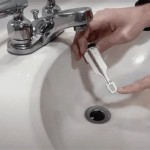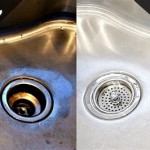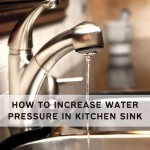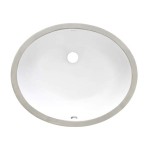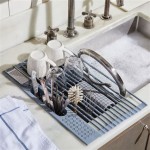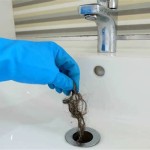Sink Faucet Garden Hose Adapter: A Comprehensive Guide
The sink faucet garden hose adapter is a ubiquitous plumbing component that facilitates the connection of a standard garden hose to a common household sink faucet. Its primary function is to provide a convenient water source for tasks such as filling buckets, washing pets, watering plants indoors, or performing other activities where direct access to an outdoor spigot is either unavailable or inconvenient. This adapter provides a versatile solution for utilizing the readily available water supply of a sink faucet for various applications typically associated with a garden hose. Understanding the different types, installation procedures, applications, and potential drawbacks of these adapters is crucial for optimal and safe usage.
The core functionality of the adapter relies on creating a secure and leak-proof connection between the faucet and the hose. Most adapters consist of a threaded component that attaches to the faucet's spout, coupled with a quick-connect or threaded fitting to accommodate the garden hose. The design often incorporates a rubber washer or O-ring to ensure a watertight seal, preventing water leakage during operation. The material used in constructing these adapters can vary, with common choices including brass, plastic, and stainless steel. Each material offers different levels of durability, corrosion resistance, and cost.
Proper selection and installation of a sink faucet garden hose adapter are essential to prevent damage to the faucet, hose, or plumbing system. Applying excessive force during installation can strip threads or crack plastic components. Similarly, using an adapter incompatible with the faucet type can lead to leaks or even complete failure of the connection. Adhering to manufacturer instructions and applying appropriate sealing techniques are critical for ensuring reliable and safe operation.
Key Point 1: Types of Sink Faucet Garden Hose Adapters
Several types of sink faucet garden hose adapters are available, each designed to accommodate different faucet styles and user preferences. Understanding the characteristics of each type is crucial for selecting the most appropriate adapter for a specific application. Here are some common types:
Threaded Adapters: This type typically features a male or female threaded end that screws onto the faucet spout. Threaded adapters are generally considered more secure and durable than other types, offering a reliable connection that is less prone to leaks. They are particularly suitable for faucets with standard threaded spouts. The thread size must match the faucet for a secure fit. These adapters are often made of brass or stainless steel for increased durability and resistance to corrosion. Proper tightening is important to avoid leaks, but over-tightening can damage the faucet or adapter threads.
Slip-On Adapters: Slip-on adapters, also known as push-on adapters, feature a rubber or plastic sleeve that slides over the faucet spout. These adapters often include a tightening clamp or lever to secure the connection. Slip-on adapters are generally easier to install than threaded adapters, making them a convenient option for occasional use. However, they may not provide as secure of a connection as threaded adapters and are more susceptible to leaks, especially under high water pressure. These adapters are generally suitable for faucets with smooth, non-threaded spouts.
Universal Adapters: Universal adapters are designed to fit a wider range of faucet types. They typically incorporate adjustable components that can be configured to accommodate different spout sizes and shapes. While universal adapters offer versatility, they may not provide as secure of a connection as adapters specifically designed for a particular faucet type. These adapters are often used as a temporary solution or when the exact faucet type is unknown.
Faucet Aerator Adapters: Many kitchen and bathroom faucets have removable aerators. Faucet aerator adapters replace the aerator with a fitting that allows for the connection of a garden hose. This type of adapter provides a direct and often secure connection, utilizing the existing threading of the aerator housing. Installation typically involves simply unscrewing the aerator and screwing in the adapter. Faucet aerator adapters are a good option for faucets with standard aerator sizes and threads.
Dual-Function Adapters: These adapters combine the functionality of a standard faucet aerator with a garden hose connection. They allow users to switch between normal faucet use and garden hose use without having to remove the adapter. Dual-function adapters are a convenient option for users who frequently need to connect a garden hose to their sink faucet.
The choice of adapter type depends on the faucet style, intended use, and desired level of security and convenience. Careful consideration of these factors will help ensure a successful and leak-free connection.
Key Point 2: Installation and Usage Guidelines
Proper installation and usage of a sink faucet garden hose adapter are crucial for ensuring safe and efficient operation. Following manufacturer instructions and observing certain guidelines can help prevent damage to the faucet, hose, or plumbing system.
Preparation: Before beginning the installation process, gather the necessary tools and materials. This may include adjustable wrenches, pliers, Teflon tape, and the appropriate sink faucet garden hose adapter. Ensure that the faucet and hose are clean and free of debris. Turn off the water supply to the faucet to prevent accidental water spillage during installation. Inspect the adapter for any defects or damage before proceeding.
Installation: Carefully attach the adapter to the faucet spout. For threaded adapters, wrap Teflon tape around the faucet threads to create a watertight seal. Tighten the adapter securely, but avoid over-tightening, which can damage the threads. For slip-on adapters, slide the adapter over the faucet spout and tighten the clamp or lever to secure the connection. Ensure that the adapter is properly aligned with the faucet spout and that there are no gaps or leaks.
Connecting the Garden Hose: Once the adapter is securely attached to the faucet, connect the garden hose to the adapter fitting. Ensure that the hose is properly aligned and that the connection is secure. Tighten the hose fitting to prevent leaks. Use a hose washer to ensure a tight and leak-free connection. Avoid using excessive force when tightening the hose fitting.
Testing: After connecting the garden hose, slowly turn on the water supply to the faucet. Check for leaks at the adapter and hose connections. If leaks are present, tighten the connections further or reapply Teflon tape. Monitor the connections for several minutes to ensure that they remain leak-free. Adjust the water pressure as needed to prevent strain on the adapter and hose.
Usage Guidelines: When using the sink faucet garden hose adapter, avoid using excessive water pressure, which can damage the adapter or hose. Do not leave the faucet running unattended, as this can waste water and potentially cause flooding. Disconnect the garden hose and adapter when not in use to prevent accidental damage or leaks. Store the adapter in a safe and dry place to prevent corrosion or damage.
Maintenance: Periodically inspect the adapter and hose for signs of wear or damage. Replace worn or damaged components as needed. Clean the adapter and hose regularly to remove dirt and debris. Lubricate the adapter threads with a silicone-based lubricant to prevent corrosion and ensure smooth operation.
Following these installation and usage guidelines will help ensure the safe, efficient, and long-lasting performance of the sink faucet garden hose adapter.
Key Point 3: Potential Drawbacks and Considerations
While sink faucet garden hose adapters offer a convenient solution for connecting a garden hose to a sink faucet, there are potential drawbacks and considerations to be aware of. Understanding these limitations can help users make informed decisions and avoid potential problems.
Water Pressure Limitations: Sink faucets are typically designed to operate at lower water pressures than outdoor spigots. Connecting a garden hose to a sink faucet can subject the faucet and plumbing system to higher water pressures than they were designed for. This can lead to leaks, damage to the faucet or pipes, and even flooding. It is important to regulate the water pressure when using a sink faucet garden hose adapter to prevent these problems. Using a pressure regulator can help control the water pressure and protect the plumbing system.
Potential for Leaks: Improper installation or the use of incompatible adapters can lead to leaks at the adapter or hose connections. Leaks can waste water, damage surrounding surfaces, and even lead to mold growth. Carefully follow the installation instructions and ensure that the adapter and hose are properly connected to minimize the risk of leaks. Regularly inspect the connections for signs of leaks and address any issues promptly.
Cross-Contamination Risks: Connecting a garden hose to a sink faucet can create a potential pathway for cross-contamination between the indoor plumbing system and the outdoor environment. Garden hoses can harbor bacteria, pesticides, and other contaminants that can backflow into the drinking water supply. To prevent cross-contamination, always use a backflow preventer when connecting a garden hose to a sink faucet. A backflow preventer is a device that prevents water from flowing backward into the plumbing system.
Compatibility Issues: Not all sink faucets are compatible with garden hose adapters. Faucets with non-standard spout sizes or shapes may not be able to accommodate an adapter. Ensure that the adapter is compatible with the faucet before attempting installation. Using an incompatible adapter can damage the faucet or adapter and lead to leaks.
Material Degradation: Over time, the materials used in the adapter and hose can degrade due to exposure to water, sunlight, and chemicals. This can lead to leaks, cracks, and other damage. Regularly inspect the adapter and hose for signs of wear and tear and replace them as needed. Choose adapters and hoses made from durable, high-quality materials to prolong their lifespan.
Aesthetic Considerations: A sink faucet garden hose adapter can detract from the aesthetic appeal of a sink. The adapter and hose can be bulky and unsightly, especially in a modern or minimalist bathroom. Consider using a discreet adapter or disconnecting the hose and adapter when not in use to minimize the visual impact.
By being aware of these potential drawbacks and considerations, users can take steps to mitigate the risks and ensure the safe and efficient use of a sink faucet garden hose adapter. Careful planning, proper installation, and regular maintenance are essential for avoiding potential problems.

Brass Garden Hose Adapter Kitchen Sink Faucet With Aerator To For Female 55 64 Inch Male 3 4 Wal Com

Kitchen Sink To Garden Hose Adapter Faucet

Water Connector Universal Tap To Garden Hose Pipe Mixer Kitchen Adapter Faucet Quick Connection Standard Aerators Sink Drain Wish

Swivel Faucet Adapter Kit Brass 3 4 Inch Garden Hose With Aerator Kitchen Sink For Female Male To Chrome Finish Wal Com

Multi Thread Garden Hose Adapter Sink Faucet To Brass With Thicker Connection Bathroom Accessories Chrome Plated Temu Kuwait

Faucet Connector For The Lavario Portable Manual Washing Machine Clothes Washer

Rubber Garden Hose Adapter Faucet

Neoperl 3 4 In Solid Brass Small Snap Coupler 97259 05 The Home

Ydmeet Swivel Faucet Adapter Kit Brass 3 4 Inch Garden Hose With Aerator Kitchen Sink For Female Male To Chrome Finish Wal Com

15mm 23mm Universal Kitchen Hose Adapter Faucet Connector Mixer Adap T


